#enchanted tales volume ii
Photo

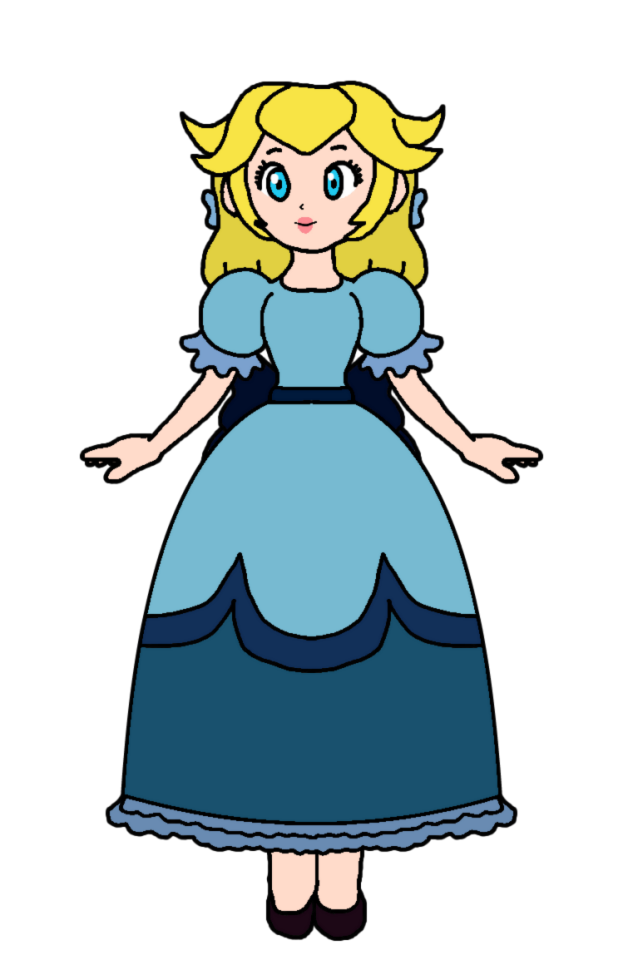








Made in 2016 + 2022
If you’ve seen this anywhere else, I posted it back on my deviantArt when it was made.
Peach cosplaying as Cinderella
1 - 8. Cinderella (1950)
9 + 10. Unreleased Enchanted Tales Volume II
#princess peach#peach#cinderella#cinderella 1950#disney#disney princess#enchanted tales volume ii#disney princess enchanted tales
5 notes
·
View notes
Text
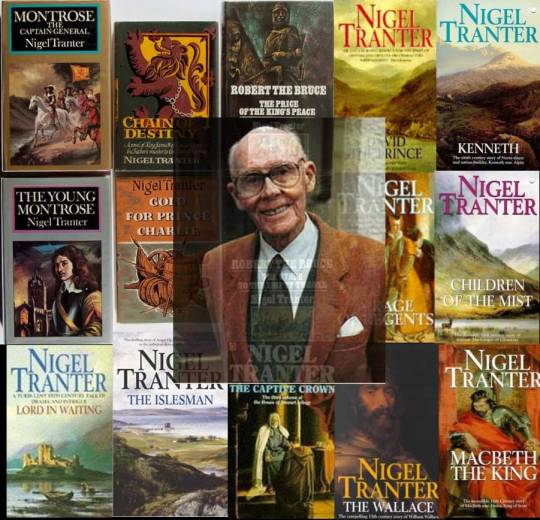
The 9th January 2000 saw the death of the historical novelist Nigel Tranter.
Tranter was the most prolific Scottish writer of all time, writing mainly factual and fictional books related to Scottish history, if you haven't read any of his work I recommend you do, the attention to detail takes nothing away from enjoyable stories. In my opinion the only other Scottish writer to come close to the volume and quality of work in this field is Sir Walter Scott.
His grandfathers were church ministers, but a great-grandfather invented the Tranter pistol. He was descended also from James Watt, inventor of the steam engine. He himself wanted to become a restoring architect, but the early death of his father forced him to stop studying. Instead he trained as an accountant and worked in the Scottish National Insurance Company. He served in the Royal Artillery during World War II.
Tranter went to George Heriot’s School in Edinburgh, which may have inspired his love of castles. His earliest writing on these was at the age of 13. As a boy he spent hours cycling to castles and mansions, and drawing them in meticulous detail, before going on to write about them in his first published book, The Fortalices and Early Mansions of Southern Scotland, 1400-1650, at the age of 22. This was followed by the five volumes of The Fortified House in Scotland. In later life he loved to take visitors out to castles and assisted many castle restoration projects in Scotland such as Fa’side.
He married May Jean Campbell Grieve in Athelstaneford Church in July 1933 and they had two children. He and May worked together on The Queen’s Scotland series, giving a short history of parishes in four Scottish regions until her death in 1979, when the project stopped.
Their son Philip was a climber, who sadly died in a car crash in 1966 on his way home from an expedition in the Dolomites. Tranter wrote No Tigers in the Hindu Kush from Philip’s notes.
Tranter saw himself primarily as a storyteller rather than a historian, and his first novel, Trespass, was published in 1937. Although criticised by some academic historians for writing fiction, he developed a huge new audience, who loved his tales of Scottish historical events and people. He wrote his fiction with increasing knowledge of Scottish history, introducing the subject to millions of people worldwide. From 1947 he decided he could earn a living by writing, and produced several novels for children, as well as adults. The Bruce Trilogy sold over 1 million copies and he had fan clubs in many countries. He also wrote Westerns, using the pen name Nye Tredgold.
Nigel Tranter received many honours and awards during his life, and was also actively involved in several organisations, including the St Andrews Society of East Lothian, Scottish PEN, Athelstaneford Flag Fund and the Saltire Society. He believed Scots should ‘be responsible for our own decisions’, and as chairman of the East Lothian Liberal Association for 15 years, he was part of the Scottish Convention, a cross-party pressure group set up to push for devolution. ‘We Scots are different, not better, but long live the difference’.
He continued to write into his 90s, starting each day with a walk across the wooden bridge at Aberlady Bay which he called ‘The Footbridge to Enchantment’. He was a familiar sight walking on the coast, stopping to jot down neat notes for his books on cards or even shells picked up from the beach. Some of these can be seen in the Tranter Museum, which is currently in Athelstaneford Parish Church. His last novel was Envoy Extraordinary. On his death thousands mourned and many friends and residents in the county remember him with great fondness.
Tranter and his family are buried in Aberlady Churchyard. There is a memorial cairn to him at the carpark near the footbridge which leads over to the nature reserve at Aberlady. The Scottish Castles Association have an annual Nigel Tranter Memorial Award in his memory.
There is a lot more on Nigel Tranter at the following link [http://cunninghamh.tripod.com/2001/index.htm](http://cunninghamh.tripod.com/2001/index.htm)
16 notes
·
View notes
Text
Books of 2023 - July

Somehow I've read a lot this month but haven't actually finished that many books considering I've been on holiday? I don't really know what happened.
Books read:
Silas Marner by George Eliot - this is by far the biggest surprise of the year. I was convinced I wasn't going to like George Eliot, but after reading Silas Marner I've been enchanted by her. On the surface I should have found this book a bit tedious, I typically don't like novels set in the countryside, however, I was hooked! Eliot's writing style was the big attraction here, she has such a lively style that I swear could make anything interesting after this, alongside her astoundingly convincing portrait of a village community in the 19th century. I came away believing people like those that inhabited Raveloe existed and I was fascinated by them. (It probably helped that I am VERY familiar with villiage communities in Warwickshire thanks to my research, which is where Raveloe is supposed to be.) Honestly this was the best place for me to start with George Eliot and I will be continuing.
The Age of Innocence by Edith Whaton - this was an impromptu read when I wanted an audiobook to listen to while sewing. However, I thoroughly enjoyed listening to this book! I was swept away into 1870s New York society and was captivated by how casually awful everyone turned out to be. I didn't enjoy it as much as The House of Mirth (mainly because I didn't like Archer, May, or Countess Olenska as much as Lily or Seldon) but I had a fabulous time revisiting Wharton.
Much Ado About Nothing by William Shakespeare - I love this play, it brings me so much joy when I read it and this time was no different. I still believe Beatrice is Shakespeare's best heroine and I will accept no arguments to the contrary.
Approximately 25 articles, reviews, essays, and introductions about Jane Austen's Emma by various authors - I don't know what's happened to me, I've become an obsessive... However, I have had a great time and learnt A LOT about regency literature in the process? It's given me a greater appreciation of Emma and I don't regret a moment I spent on this. My only problem is I don't really know what to do with all my notes!
DNF:
Mansfield Park by Jane Austen - I tried okay? However, I finished volume one and couldn't find a single reason to keep reading except completionism. I hated Fanny and the Bertrams, I was bored by the Crawfords, and I missed the style of Emma. Overall, I was left wondering why I was bothering with Mansfield Park as I wasn't enjoying myself. So, I dropped it to read something else that I'd actually enjoy.
Currently reading:
Evelina by Frances Burney - I'm in love with this book, but for some reason I'm not devouring it? I'm taking my time with it and revelling in the experience - I've made my peace with this and will continue to enjoy my leisurely read.
Richard II by William Shakespeare - I'm rereading this and taking it an act a day because I'm making notes. I'll actually finish it tomorrow, but I'm not counting it as read.
The Book of Lost Tales Part Two by J.R.R. Tolkien - another leisurely read because it's so dense and, like Shakespeare, I'm making notes when I feel inclined. I also really struggled to get through the section on The Tale of Tinuviel... (I don't like ANY of the prose versions of Beren and Luthien? It needs to be in verse for me to get into it 🤷♀️) But now I've got through that opening section I'm enjoying this a lot more.
Charles I and the People of England by David Cressy - my current non-fiction tome. I'm having a great time with this, but it was going to be a winner considering my unreasonable love for Charles I!
Jonathan Strange and Mr Norrell by Susanna Clarke - I have no idea how I ended up in the middle of this but I'm enjoying it well enough that I'm going to continue (although I think I prefer Piranesi?)
#books#reading#books of 2023#july reads#silas marner#george eliot#the age of innocence#edith wharton#much ado about nothing#william shakespeare#articles on emma#jane austen#mansfield park#evelina#frances burney#the book of lost tales#j.r.r. tolkien#richard ii#charles i and the people of england#david cressy#jonathan strange and mr norrell#susanna clarke
28 notes
·
View notes
Text
A Pre-History of Fanfiction II: Sherlock Holmes
Part I
Part III
Part IV
Part V
Sources
Chapter 2: Sherlock Holmes
For this next section, we’re taking a big jump in time. Arthur Conan Doyle published the first Sherlock Holmes novel A Study in Scarlet in Beeton’s Christmas Annual in 1887. A few years later, in 1891, a regular series started in The Strand. Sherlock was a success and there was an outpouring of love for the character similar to, but surpassing, the love for Lemuel Gulliver and Pamela Andrews. Fans of the stories wrote so many letters addressed to 221b Baker Street that the Abbey Road Building Society had to designate an apartment as 221B. Time only fanned the flame: starting in the 1920s and 30s, fans of Sherlock Holmes started to congregate in fanclubs like the Sherlock Holmes Society and the Baker Street Irregulars.
Fans were enraptured by the adventures of everybody’s favorite consulting detection and his trusty sidekick Watson. They were fascinated with Sherlock, yes, but they also loved everything else about his world. Characters largely unexplored in the fiction like Professor Moriarty, Mycroft Holmes, and Irene Adler were analyzed and reimaged ad infinitum. The turn of the century London setting transported readers who were enjoying the tales decades later. The suggestion of untold stories, like the famous Giant Rat of Sumatra, sparked fans’ creativity. This was similar to the Gulliver phenomenon, whose fans explored Lilliput and other imaginary countries, but sets itself apart from Pamela whose readers were solely fixated on the eponymous character herself.
But why Sherlock Holmes? Why did he inspire such devotion? Michael Saler that Sherlock Holmes mania is a reflection of larger trends happening at the turn of the century. Due to the Industrial Revolution, the world was changing, the world was changed, and this modern age had become disenchanted. There was a shift from value rationality to instrumental rationality, which, in my understanding, means that work was prioritized rather than the end product. The world was becoming more commercialized as well, similar to trends we saw in the 18th century as well, human beings were becoming consumers rather than producers. People sought out lost enchantment through the arts and crafts movements, spiritualism and the occult, and fascination with the Eastern world (aka Orientalism). Sherlock existed in between these two conflicting worlds. Certainly, he represented modernity: he was secular, urban, and materialist (in the sense that he wasn’t concerned with a spiritual world). However, Holmes himself yearned for enhancement even confessing his “love for all that is bizarre and outside the conventions and humdrum routine of everyday life (Saler)”.
Sherlock Holmes stories showed the “romance of reason” like many contemporary science fiction (which we’ll talk about in the next chapter) (Saler).” His logic and deduction was a magical power in and of itself, resolving the tension between the enchantment of the old world and the materialism of the new one.
Fans weren’t satisfied with just reading Holmes' exploits, they wanted to be him too. Thus began the “Great Game” a semi-ironic belief in Sherlock and Watson as real people (remember the 221B letter writing?). They used his deduction tactics on real or fictional crimes, bringing the character to life in a certain sense. This was all to Conan Doyle chagrin, of course, who was burdened by his most famous creation. Sherlock carried on in spite of Doyle’s hatred of him and fans decentralized the author. Readers of Sherlock corresponded amongst themselves, not through Doyle like SamuelRichardson before him. The Baker Street Irregulars even avoided saying Doyle’s name at official meetings. Sherlock took on a life of his own, whether the Author liked it or not.
For 20th century readers, Sherlock Holmes fanfiction was easy to find. There was a huge volume of parodies, pastiches, knock-offs, continuations, and localizations of the Sherlock Myth. This included an anonymous 1913 Greek novel named Sherlock Holmes Saving Mr. Venizelos serialized in the magazine Hellas. This served as a localization of Sherlock, placing him in a Greek context familiar to those readers. He was parodied in London magazine Punch in a 1928 short story by Ralph Wotherspoon. Even Doyle’s son Adrian got in on the action, writing and publishing New Sherlock Holmes Stories in the 50s. Sherlock Holmes reimaginings continue to today, in novels, television shows, movies, comics, and of course, fanfiction.
The Sherlock Holmes fandom birthed our modern conception of what a fandom is “a way of life” rather than something you just enjoy. Fans found their identity in the Sherlock stories and in the groups they organized around.
#sherlock holmes#holmes#fanfiction#history of fanfiction#my writing#article#fan fiction#fanzines#zines
5 notes
·
View notes
Text
Unveiling the Magical Tapestry: A Bride's Story
Bridal tales are enchanting narratives that weave dreams, emotions, and traditions into the fabric of a single moment—the union of two souls. The bride, adorned in resplendent attire, takes center stage in this story, and her journey is a mosaic of emotions, preparations, and cherished rituals. Let's embark on a journey through the captivating tapestry of a bride's story.
I. Prelude to the Celebration
A. Embracing Tradition
A bride's story often begins with the embrace of cultural traditions. From engagement ceremonies to pre-wedding rituals, these moments not only symbolize the union but also connect the couple to their roots.
B. The Significance of Rituals
Each ritual in a bride's story holds a special significance. Mehndi ceremonies, sangeets, and haldi functions are not just celebrations; they are threads that bind families and friends together, creating memories that last a lifetime.
II. The Bridal Attire: A Symphony of Elegance
A. Choosing the Perfect Ensemble
Selecting the bridal attire is a pivotal chapter in a bride's story. From traditional sarees to contemporary lehengas, each choice reflects the bride's personality and style. The process of finding the perfect outfit is an exploration of self-expression and cultural identity.
B. The Veil of Tradition
Veils, dupattas, or pallus—these are not just accessories but elements that carry the weight of tradition. The way a bride adorns these pieces adds layers to her story, intertwining the modern and the traditional in a seamless dance.
III. Bridal Beauty: Beyond the Surface
A. Makeup as an Art
The transformation of a bride through makeup is an art form in itself. Makeup artists become storytellers, enhancing the natural beauty of the bride and creating a canvas that reflects her inner radiance.
B. Hairstyles that Speak Volumes
From intricate braids adorned with flowers to cascading curls, a bride's hairstyle is a silent narrator of her story. Each twist and turn reflects the nuances of her personality and the essence of the occasion.
IV. The Wedding Venue: A Palatial Canvas
A. Choosing the Perfect Setting
Selecting a wedding venue is akin to choosing the backdrop of a grand painting. Whether it's a traditional banquet hall, a scenic garden, or a historic palace, the venue becomes the stage where the bride's story unfolds.
B. Decor that Speaks Volumes
Floral arrangements, lighting, and thematic decor become storytellers, setting the mood for the celebration. The ambiance created by these elements adds depth to the chapters of the bride's journey.
V. The Ceremonial Unveiling: Walking Down the Aisle
A. The Entrance: A Grand Prelude
The bride's entry is a moment of anticipation and awe. The rhythm of her steps echoes the beating hearts of all who witness this sacred journey down the aisle.
B. Exchanging Vows: The Pinnacle of the Story
The exchange of vows is the climax of a bride's story. The promises made, the vows spoken—they become the foundation upon which the couple builds their shared destiny.
VI. Capturing Moments: The Role of Photography
A. Photographs as Timeless Narratives
Photographs freeze moments in time, preserving the chapters of a bride's story. Candid shots, stolen glances, and joyous celebrations become a visual narrative that the bride can revisit for years to come.
B. Candid Moments: The Heartbeat of the Story
In the midst of the grandeur, candid moments capture the essence of the bride's emotions—laughter, tears, and the unfiltered expressions that make her story authentic and relatable.
VII. Post-Wedding Celebrations: A New Beginning
A. Reception: The Epilogue
The reception marks the conclusion of the grand celebration. It is a chapter where the bride, now a wife, steps into a new role, and the story transitions into the promising chapters of married life.
B. Honeymoon: A Romantic Prologue
As the newlyweds embark on their honeymoon, a new story begins—one of shared adventures, discoveries, and the deepening of the bond forged during the wedding festivities.
VIII. A Forever Tale: Beyond the Wedding Day
A. Building a Life Together
The wedding day is a momentous chapter, but a bride's story extends far beyond. Building a life together involves facing challenges, celebrating victories, and crafting a narrative that spans a lifetime.
B. Cherishing the Ever After
Through every milestone, every shared laughter, and every tear shed together, the bride's story evolves into a tale of enduring love and companionship—a story that continues to be written with each passing day.
IX. Navigating Challenges: The Subplots of Marriage
A. Weathering Storms
A bride's story doesn't shy away from challenges. The early days of marriage may bring unforeseen storms, but it's in facing these challenges together that the couple solidifies their bond.
B. The Art of Compromise
Every marriage has its unique dance of compromise. Balancing individual aspirations, merging two lives, and making joint decisions—these become the subplots that add depth to the ongoing narrative.
X. Family Additions: New Characters in the Story
A. The Gift of Parenthood
As the chapters progress, some brides choose to expand their story through the gift of parenthood. The arrival of little ones introduces new characters, and the story transforms into a family saga.
B. Balancing Roles: Juggling Act of Modern Parenthood
Modern brides navigate the challenges of balancing career and family, creating subplots that resonate with the evolving dynamics of contemporary relationships.
XI. Milestone Celebrations: Chapters of Joy
A. Anniversaries: Reflection and Renewal
Anniversaries become milestones, providing the couple with moments to reflect on their journey. These chapters of joy are celebrated with love, renewing the commitment made on the wedding day.
B. Grandparenting: Passing the Torch
For brides who embark on the journey of grandparenthood, the story comes full circle. Passing on traditions, wisdom, and love to the next generation becomes a fulfilling chapter.
XII. Narrating Legacy: The Tale Lives On
A. Passing Down Traditions
A bride's story transcends generations as traditions are passed down. From bridal attire to cultural rituals, each element becomes a part of a larger legacy.
B. The Continuation of Love
The tale of love doesn't end with the final chapter of a bride's story. It lives on in the hearts of those touched by the narrative, creating ripples of love that extend far beyond the immediate family.
XIII. Celebrating Renewal: Vow Renewal Ceremonies
A. Renewing Commitments
Vow renewal ceremonies mark the chapters where couples reaffirm their love. These celebrations of renewal are a testament to the enduring nature of a bride's story.
B. Recapturing Moments
Whether it's a small intimate gathering or a grand celebration, vow renewal ceremonies provide couples with the opportunity to recapture the magic of their wedding day.
XIV. Words of Wisdom: Insights from Seasoned Brides
A. Reflections on a Journey
Seasoned brides often share insights gained from their journey. These reflections offer wisdom and guidance to brides embarking on the initial chapters of their own story.
B. Lessons Learned
From communication to patience, seasoned brides emphasize the importance of key ingredients that contribute to a successful and fulfilling marriage.
Conclusion: The Eternal Charm of a Bride's Story
In the grand tapestry of weddings, the bride's story stands as a masterpiece, a fusion of tradition, style, and personal narrative. From the first chapter of engagement to the final pages of a lifelong commitment, each moment is etched with love, joy, and the promise of a happily ever after.
A. The Ever-Evolving Story
A bride's story is not a static narrative but an ever-evolving tale. It's a tapestry woven with threads of love, resilience, and the shared experiences that make each chapter unique.
B. An Ongoing Saga
As each day unfolds, the bride's story continues to be written. It's a saga that transcends time, embracing the past, present, and future in a dance of eternal love.
0 notes
Text
THE ULTIMATE GUIDE TO PORTRAIT PHOTOGRAPHY

/ Guide / By sogunde
WhatsAppXFacebookLinkedInEmailShare
Key Takeaway:
Embark on a vivid journey with Papishe Studios, your haven for evocative portrait photography, where every click resonates with emotion, narrates a story, and breathes life into memories, making them eternal. Dive into this guide and unravel the essence of capturing moments that matter.
I. Capturing Souls, Not Smiles: The Heart of Portrait Photography
The journey into portrait photography is often mistaken as a quest to capture perfect smiles, impeccable backdrops, and exemplary lighting. However, Papishe Studios unveils a different story – a tale where every portrait is a deeply woven fabric of emotions, stories, and experiences, crafting visuals that transcend mere appearances and delve into soulful expressions.
The Emotional Canvas of Portraits
Emotions in photography become a timeless artefact of cherishing myriad feelings ranging from joy, anticipation, authority, and beyond. Whether it’s the gleaming eyes of a new mother or the stern, confident gaze of a corporate leader, every emotion becomes a crucial brushstroke on the canvas of portrait photography.
The Diversity of Expressions
Exploring expressions involves venturing into the profound aspects of personality, demeanor, and charisma, ensuring that every family photo resonates with warmth and every professional headshot echoes with authority. Papishe Studios cherishes this diversity, sculpting portraits that are a vivid reflection of individuality and uniqueness.
II. The Unseen Behind the Scenes: Crafting Photographic Perfection
Delving into the realm behind the lens unveils the unspoken intricacies and subtle nuances that culminate in photographic brilliance. At Papishe Studios, every portrait is a meticulous amalgamation of precision, expertise, and a distinct artistic touch.
Technical Mastery Meets Artistic Ingenuity
The seamless unison of technical acumen and artistic creativity crafts images that are not merely visuals but narratives that speak volumes. Understanding the technicalities, from the perfect use of lighting to mastering the art of angles, is as vital as incorporating a creative vision that enables these elements to weave a story.
Breathing Life into Every Click
The soul of a portrait is ignited by the subtle interplay of various elements, all harmoniously synchronized to breathe life into a static image. From the gleaming lights of the studio to the charismatic poses of the subject, every component becomes a vital heartbeat in the living entity that is a portrait.
III. Navigating Through the World of Portrait Photography with Papishe Studios
A. From Personal Memories to Professional Milestones
Papishe Studios offers a vast palette of portrait photography services, meticulously crafted to cater to every need, occasion, and milestone. From intimate family sessions and cherishing maternal glow to crafting professional corporate images, we ensure that every moment captured is a perfect reflection of you.
B. Offering a Wealth of Resources and Insights
Embark on a journey of knowledge and expertise with our forthcoming blogs, ensuring you are well-equipped and informed to make every photographic session a masterpiece. From tips on choosing the perfect portrait studio to mastering the art of posing, Papishe Studios becomes your guide and companion in every photographic adventure.
IV. Crafting Your Story with Papishe Studios: Your Companion in Every Click
The Papishe Promise: Quality, Comfort, and Unparalleled Experience
We, at Papishe Studios, don’t merely capture photographs; we curate experiences. Ensuring client comfort, satisfaction, and joy in every session is as vital to us as crafting impeccable portraits. Every click is a promise – a pledge of quality, professionalism, and a journey that’s as memorable as the photographs themselves.
Embarking on a Journey Together
Join hands with Papishe Studios as we traverse through the enchanting world of portrait photography together. Your stories become our inspiration, and your moments become our masterpieces, as we journey together, crafting memories that are etched into the annals of time, forever.
Upcoming Insights and Resources
1 – “Top Studio Photographers in Romford, Essex“
2 – “Portrait Photography: A Window to the Soul“
3 – “Crafting Timeless Family Portraits: Tips and Inspirations“
4 – “Planning the Perfect Family Photography Shoot: A Comprehensive Guide”
5 – “Choosing the Ideal Portrait Studio Near You: What to Look For”
6 – “Corporate Headshots: Creating the Perfect Professional Image”
7 – “Business Headshots: Crafting a Commanding Presence”
8 – “Discover the Best Headshot Photography Services Near You”
9 – “Family Photo Studio: Crafting Everlasting Memories”
10 – “The Art and Science of Professional Portrait Photography”
11 – “Business Portraits: Building a Portfolio that Speaks Volumes”
12 – “Studio Portrait Photography: Mastering the Controlled Environment”
13 – “Corporate Portrait: Beyond the Suit and the Smile”
14 – “Family Studio Photography: Creating a Canvas of Memories”
15 – “Celebrating Family through the Lens: Top Family Portrait Photographers”
16 – “Maternity Family Photos: Capturing the Glow and the Anticipation”
17 – “Capturing Innocence: The Art of Children’s Portrait Photography”
18 – “Strike a Pose: Tips and Tricks for Portrait Photography Posing”
19 – “Professional Portraiture: Capturing the Essence with Every Click”
20 – “Senior Photography: Celebrating Milestones with Style”
21 – “Corporate Headshots Near You: Finding the Best Services”
22 – “Inside a Professional Photo Studio: What Makes the Magic Happen?”
23 – “Corporate Portrait Photography: Creating a Visual Impact”
24 – “Perfecting the Corporate Headshot: Photography Tips and Techniques”
25 – “Capturing Milestones: Finding the Best Graduation Photographer Near You”
Journey with Papishe Studios into a world where every click tells a story, every portrait is a memory, and every session is an adventure. Book your moment with us today, and let’s create something beautiful together.
1 note
·
View note
Text
Shed Souls Found! Uplifting Stories About Golden Retrievers Volume 2 Is Touching and even Bittersweet
Lost Souls Found out!: Inspiring Stories About Golden Retrievers Quantities 1 and 2, published by Joyful Tails Books, are a must listen (or read) for anyone who loves puppies, but especially those who else love Golden Dogs.
I personally had been immediately drawn to these books right after reading a partners excerpts. I myself had a beautiful Golden Retriever back college who We raised from puppy-hood. My dear plus faithful friend resided to be practically fourteen years, which often is quite historical for that breed.
Edited by Kyla Duffy and Lowrey Mumford, these publications are in fact a series of short testimonies by many men and women, couples, and households that have adopted preserved Golden Retrievers, or perhaps Golden Retriever blended dogs. Many, when not the majority of these canines, would not usually have had the home if these types of people had not given them one particular. These aren't make believe tales (or tails), but instead all real accounts of people who, in several cases, took on some real difficulties.
The stories within these books cover anything from blissful and amazing to a little bit heartbreaking and heartbreaking. These are, after almost all, stories of preserved dogs. But generally there is still happiness amidst sadness, plus underpinning even the more melancholy testimonies will be the great feeling of seeing precisely how kindness and concern still readily is present in the planet.
Lots of the dogs in these stories are available from abuse; many are abandoned after having been "used up" in a puppy mill. Nonetheless many are rejected only for health reasons. Sometimes, a rescued Golden will convert out to be nearly perfect, nevertheless many do not since they often come with issues in addition to baggage.
The people which accept the battle of some these puppies are real game characters. They adopt figuring out they are acquiring a dog along with either physical or even mental issues, or both, but these people do it in any case. They exercise extreme love and patience. For example, several of these pups have anxiety in addition to phobias which can easily manifest itself into peculiar or destructive habits. Still others include health problems like cancers or other diseases that plague the dog throughout its whole life. A few of these dogs are also missing limbs intended for various reasons. But the dog's nurturing new parents nutriment and love these animals plus the results are amazing. Envision an abused doggie in need associated with therapy later turning into a certified therapy dog regarding people in want!
Some of typically the most touching stories are of people that adopt "seniors, " the dogs who else have anywhere by one or two years kept in order to months or even weeks. The particular people who get these dogs realize full well of which their job is to give as very much enjoyment love to be able to the animal as long as possible and that their time with your pet or her will be short-lived. Some associated with these dogs turn up barely capable to stroll or eat. The experienced dog users know when it's time to say goodbye, let go, and send their four-legged friend off in order to "the rainbow link. "
Many of the people who else wrote these tales are what is definitely lovingly known as "foster failures" -- people today who took your dog in as the temporary foster till a "forever home" was found. Nevertheless, in the process of cultivating, these parents chop down in love with the dog and can not let this individual or she proceed.
Even if Additional info 't not a puppy lover, you will appreciate these short, enchanting, inspiring and occasionally bittersweet tails associated with the enduring power of love and even kindheartedness. Go to be able to Amazon's Audible web-site, or iTunes, and look for Lost or damaged Souls Found! Uplifting Stories About Fantastic Retrievers Volumes one particular and II and listen today.
Kelly Libatique is a professional voice-over artist, speaker, and publisher. He resides found in the San Francisco Bay Area together with his wife and two sons.
#How to Build a Profitable Website#click here#more info#here#read more#website#get more info#check here
0 notes
Text
Fairy Tale Spells by Bree NicGarran
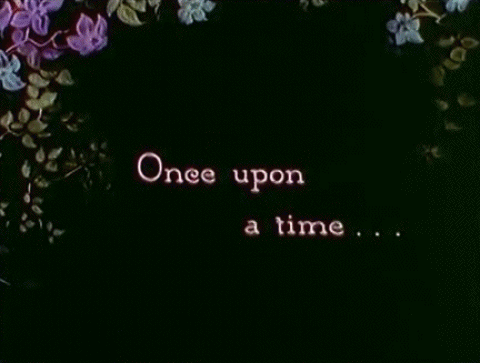
Fairy tales have always been with us. Apart from teaching moral lessons and practical cautions, they remain a source of wonder and inspiration that persists even in a modern age dominated by technology.
There is magic in these tales as well - spells and charms that aid the worthy and conquer obstacles, heal the ailing and bring wealth to the poor, thwart the wicked and exact terrible revenge, or grant someone their hearts' desire and make their dearest wishes come true.
I have created over a hundred such spells, inspired by the tales recorded by the Brothers Grimm and the folklore collected by Andrew Lang. One volume was published back in 2017 and another is forthcoming. If you're curious (and maybe a little bit daring), here are some previews of the spells to be found in the pages of The Sisters Grimmoire.
After all, who couldn’t use a bit of Happily Ever After?
The Sisters Grimmoire, Vol. I
A Bellyful of Stones - A curse to punish the greedy.
Eyes Like Coals - To summon a spirit guardian.
Roughskin - To protect and disguise oneself from those who mean to harm you.
Straw Into Gold - A spell to bring wealth.
Table of Plenty - To obtain needed money or provisions.
The Red Flower - For removing enchantment.
The Sorrow Pot - To relieve your sorrows and bring justice for a grievance.
The Wall of Thorns - To protect one’s home and property.
The Sisters Grimmoire, Vol. II (forthcoming)
Make Sure You Lock Up - To set your household wards when you lock your front door.
Gilded Locks - To braid wealth into the caster's hair.
Something In The Water - To discover whether a person is suffering from the effects of baneful magic.
The Ferryman's Curse - To curse another with the problems that plague your own life.
The Shining Web - To repel trouble from the home.
You can find more spells from The Sisters Grimmoire, Vol. I and potion and powder recipes from Pestlework by checking out the mid-month minisodes of Hex Positive, available on your favorite podcast platform.
All of my titles can be found on Amazon or ordered from the Willow Wings Witch Shop. (If you'd like to see them in your local witch shop, feel free to give the proprietor my contact information!)
If you're enjoying my content, please feel free to drop a little something in the tip jar and tune in to my monthly show Hex Positive! 😊
#witchcraft#witchblr#spells#fairy tales#folklore#fairy tale spells#magic#pagan#witchy books#witchy things#the sisters grimmoire#herb magic#secular witchcraft#paganblr#magick#witches of tumblr#baby witch#beginner witchcraft#witchcraft 101#witch tip
4K notes
·
View notes
Note
For the book stacks, any of these you like: Books Rachel would Read, Books Rietta would Read, and/or Books Elystan would Read.
Ooh, what a fun idea! I’m pretty sure all my OCs would read all kinds of things that I wouldn’t, but let’s suppose they’ve been let loose in my house to choose twenty books from my shelves. Here’s what they might go for.
Rachel
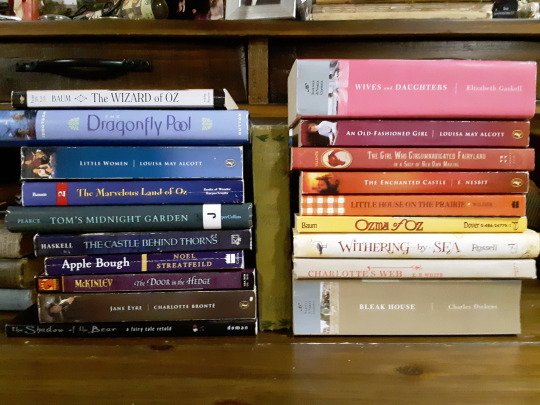
Little Women by Louisa May Alcott
An Old-Fashioned Girl by Louisa May Alcott
The Wonderful Wizard of Oz by L. Frank Baum
The Marvelous Land of Oz by L. Frank Baum
Ozma of Oz by L. Frank Baum
Jane Eyre by Charlotte Bronte
Bleak House by Charles Dickens
The Shadow of the Bear by Regina Doman
Wives and Daughters by Elizabeth Gaskell
The Castle Behind Thorns by Merrie Haskell
The Dragonfly Pool by Eva Ibbotson
The Door in the Hedge by Robin McKinley
The Enchanted Castle by E. Nesbit
Tom’s Midnight Garden by Philippa Pearce
Withering-By-Sea by Judith Rossell
Apple Bough by Noel Streatfeild
The Girl Who Circumnavigated Fairyland in a Ship of Her Own Making by Catherynne M. Valente
Charlotte’s Web by E. B. White
Mother Carey’s Chickens by Kate Wiggin Douglas
Little House on the Prairie by Laura Ingalls Wilder
Most of Rachel’s selections are classics, with an emphasis on family or friendship stories, which she would relate to. But there’s also a lot of children’s fantasy: Oz (the real-world equivalent of the Yew stories she loves in-universe) and others in a similar vein. Some books were chosen because they’re vaguely reminiscent of her encounters with Rietta: The Enchanted Castle, Tom’s Midnight Garden, The Dragonfly Pool, etc. Jane Eyre and The Shadow of the Bear are present because they have heroines I think she’d appreciate.
Rietta
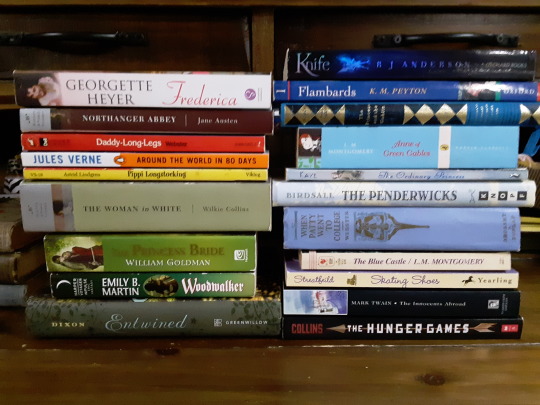
Knife by R. J. Anderson
Northanger Abbey by Jane Austen
The Penderwicks by Jeanne Birdsall
The Hunger Games by Suzanne Collins
The Woman in White by Wilkie Collins
Entwined by Heather Dixon Wallwork
The Princess Bride by William Goldman
Frederica by Georgette Heyer
The Ordinary Princess by M. M. Kaye
Pippi Longstocking by Astrid Lindgren
The Princess and the Goblin by George MacDonald
Woodwalker by Emily B. Martin
Anne of Green Gables by L. M. Montgomery
The Blue Castle by L. M. Montgomery
Flambards by K. M. Peyton
Skating Shoes by Noel Streatfeild
The Innocents Abroad by Mark Twain
Around the World in Eighty Days by Jules Verne
Daddy-Long-Legs by Jean Webster
When Patty Went to College by Jean Webster
For Rietta, I choose books about heroines I think she would appreciate (outgoing and enthusiastic girls/women who boldly take on the world and often escape or defy stifling circumstances), stories with an emphasis on adventure and/or romance (Woodwalker is exactly the sort of fantasy she would like; The Hunger Games would have her on the edge of her seat), travel tales, and family stories that she would devour enviously (her choices of fictional families are a bit more lively/chaotic than Rachel’s selections).
Elystan

Six of Crows by Leigh Bardugo
Artemis Fowl by Eoin Colfer
The Adolescent by Fyodor Dostoevsky
Sherlock Holmes: The Complete Novels and Stories Volume I by Arthur Conan Doyle
Sherlock Holmes: The Complete Novels and Stories Volume II by Arthur Conan Doyle
The Prisoner of Zenda by Anthony Hope
Raffles by E. W. Hornung
Archer’s Goon by Diana Wynne Jones
The Lives of Christopher Chant by Diana Wynne Jones
Eight Days of Luke by Diana Wynne Jones
The Story of the Treasure Seekers by E. Nesbit
The Magic World by E. Nesbit
The False Prince by Jennifer A. Nielsen
The Scarlet Pimpernel by Baroness Orczy
Tenthragon by Constance Savery
The Extraordinary Education of Nicholas Benedict by Trenton Lee Stewart
The Thief by Megan Whalen Turner
The King of Attolia by Megan Whalen Turner
The Gold Bat and Other Stories by P. G. Wodehouse
Mike and Psmith by P. G. Wodehouse
Assuming I could convince Elystan to restrict himself to just twenty books! He’s got an apparent preference for crime and royal intrigue, both if possible. Lots of trickster characters. I think he’d very much appreciate Diana Wynne Jones. He’s a big Sherlock Holmes fan (or rather, his world’s version of the character) but also reads Raffles with the same excitement, seeing no moral inconsistency. Six of Crows is not age-appropriate for him, but why would that stop him he’d be all over that plot. Wodehouse’s school stories would amuse him, and I think he’d appreciate the young Nicholas Benedict. And Oswald Bastable’s narration style. The Adolescent is there because copies of Flight of Fantasy (the book he reads in “A Visit from the Murderess”) are impossible to come by, and Tenthragon is something he really ought to read, particularly later in his timeline.
#asks#valiantarcher#thank you!#The Blackberry Bushes#Rachel Doncath#Rietta Valencourt#Elystan Liddick
20 notes
·
View notes
Text
Rogers and Hammerstein: The Musical Making Wizards of the Golden Age of Hollywood

There were a lot of fantastic musicals that came out in the 40s and 50s during the Golden Age of Hollywood and one duo was responsible for writing and scoring a lot of them. Richard Rogers and Oscar Hammerstein II garnered 34 Tony Awards, 15 Academy Awards, 2 Grammy Awards, and even 2 Pulitzer Prize Awards. That’s a lot of awards and makes the duo arguably the best writing partnership of the 20th century. I want to take a quick review of some of their well known works:
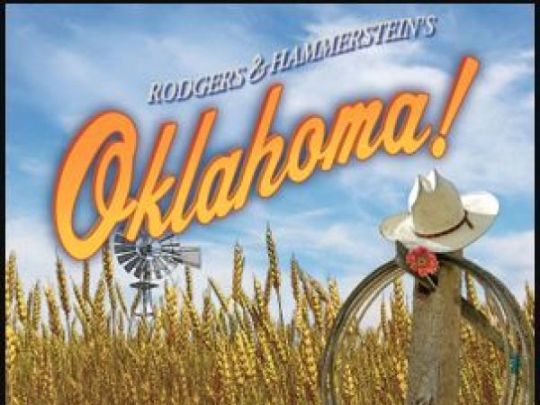
The first collaboration of the duo was Oklahoma!, a stage play that opened in 1943 and was made into a film in 1955. Many actors and actresses won Tony Awards for playing the lead roles of Curly and Laurie through the many revivals of the stage play. The play itself won a special award in 1993 for its 50th anniversary and scored an award for Best Revival in 2019. The 1955 film adaptation won Oscars for Best Scoring and Best Sound Recording. The film was also inducted into the National Film Registry for Preservation. The story is known for having a love triangle at the turn of the century and conveying plot points and character progression in the songs instead of using the music as a simple distraction. Well known songs include “Oh What a Beautiful Mornin,” “The Surrey With the Fringe On Top,” “People Will Say We’re in Love,” and “Oklahoma.” The duo received a special Pulitzer Prize in 1944 for Oklahoma! for the new approach to incorporating songs as part of a dramatic format in musicals.

I recently saw Carousel for the first time and it is the earliest musical I know of with an antihero that has a tragic plot. This approach was much more familiar in West Side Story and Cabaret, but I can see how this was an influence to that kind of narrative. Storywise, the movie seems very much ahead of its time. There was also something strange about the introduction that seemed out of place for a musical from the era that I couldn’t identify, but research informed me that there was no overture. This was unique of all the plays done by the duo. The stage version won 8 Donaldson Awards and the 1994 Broadway revival won 5 Tony awards. Although lesser known than some of the other musicals by the duo, a film version was made in 1956 that was popular with audiences. From the soundtrack, most popular where the songs “The Carousel Waltz,” “If I Loved You,” “June is Bustin Out All Over,” and “You’ll Never Walk Alone.”

South Pacific is a Broadway musical that ran for 5 years starting in 1949 and ended up with 1,925 performances. It was based on a 1947 book called Tales of the South Pacific that won a Pulitzer Prize for Drama because of its progressive message against racism. For their work, Rogers and Hammerstein won their second Pulitzer as well. The original production won 10 Tony Awards and the 2008 revival won another 7 Tony Awards. Adaptations included a Hollywood film in 1958 that won an Oscar for Best Sound and a 2001 TV film that had 2 Emmy nominations. The musical is best known for the songs “Bali Ha’i,” “Younger Than Springtime,” and “Some Enchanted Evening.” The film is very progressive for the time as it addresses the refusal of loving relationships due to racism and the sexist expectations for women to leave their jobs and return to home making when men came back from WW2.
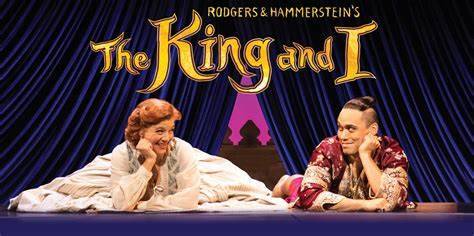
The King and I was an adaptation of the famous story of Anna Leonowens who was governess to the king of Siam in the 1860s. The work was again a look at relationships formed under difficult and unexpected circumstances, which was a theme for all the works of Rogers and Hammerstein. This theme has carried on to today and still ranks as the most popular topic for drama in musicals. The role of the King of Siam was a star making part for actor Yul Brynner, winning him a Best Actor Tony in 1952 for the musical and Best Actor Oscar and Golden Globe for his reprisal of the role for the 1956 Hollywood film. The story itself ended up taking home 5 Oscars, 5 Tonys, and 2 Golden Globes. It was undoubtedly the biggest film success for a Rogers and Hammerstein collaboration until one last story blew everything away. Well known songs from this musical include “I Whistle a Happy Tune,” “Getting to Know You,” “I Have Dreamed,” and “Shall We Dance?”
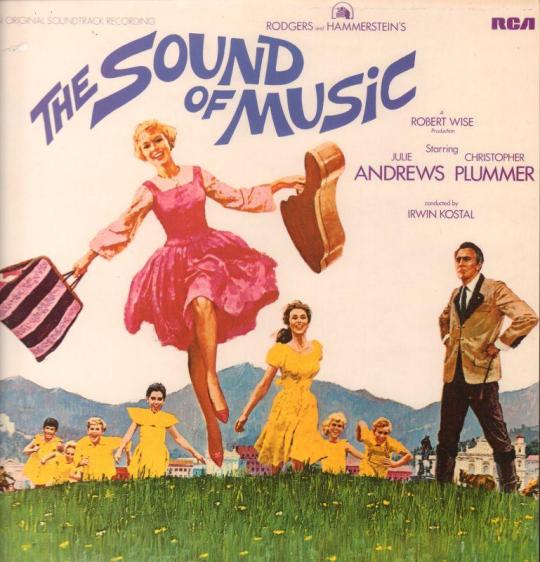
The most successful production of Rogers and Hammerstein was unfortunately also their last: The Sound of Music, which was finished a year before the death of Oscar Hammerstein in 1960. The musical won 6 Tony awards including Best Musical, then became the most successful film adaptation of a Broadway musical of all time in 1965. The film version starred the vivacious Julie Andrews right off of her starring role in Mary Poppins. The film was nominated for 10 Oscars and won 5 of them after being nominated for 4 Golden Globes and winning 2 of them. What is more, the film was one of the top 10 most financially successful films of all time and adjusted for inflation earned about 2.3 billion dollars at the box office. The story of the Von Trapp family trying to escape Nazi controlled Austria was a harrowing story that caught the interest of millions of people and set the tone for what was an acceptable backdrop of a musical. My favorite songs from the production are “The Sound of Music,” “My Favorite Things,” “Sixteen Going on Seventeen,” “Do-Re-Mi,” and “Edelweiss.”
These are the big five for Rogers and Hammerstein, but they made other productions like State Fair, Cinderella, and Flower Drum Song. As far as sheer volume, the duo was unlike any other and would have likely continued if not for the death of Hammerstein. For his work, Richard Rogers was the first person to get the coveted EGOT, winning an Emmy, Grammy, Oscar, and Tony. I greatly appreciate their work to bring drama and relevant social topics to musicals instead of simply focusing on sparkle and display. They changed the medium and raised expectations, which helped create the Broadway musical of today.
#rogers and hammerstein#musicals#sound of music#carousal#the king and i#south pacific#oklahoma#Broadway#hollywood#golden age#40s#50s#introvert#introverts
42 notes
·
View notes
Text
Table of Contents

Here is a full list of the books I’ve collected so far and will be adding to this blog. If there’s one you’d like to see before the others, let me know because right now, I’m just choosing at random.

✲•······················▃🖋️······················•✲
2920, morning star, v1
2920, sun's dawn, v2
2920, first seed, v3
2920, rain’s hand, v4
2920, second seed, v5
2920, sun's height, v7
2920, last seed, v8
2920, hearth fire, v9
2920, sun’s dusk, v11
2920, evening star, v12
a children's anuad
a dance in fire, v1
a dance in fire, v3
a dance in fire, v4
a dance in fire, v5
a dance in fire, v6
a dance in fire, v7
a dream of sovngarde
a game at dinner
a gentleman's guide to whiterun
a hypothetical treachery
a kiss, sweet mother
a minor maze
a tragedy in black
advances in lockpicking
aedra and daedra
ahzirr traajijazeri
aicantar’s lab journal
alduin is real
alva’s journal
an explorer's guide to skyrim
ancestors and the dunmer
annals of the dragonguard
antecedants of dwemer law
arcana restored
argonian account, book 1
argonian account, book 2
argonian account, book 3
argonian account, book 4
arvel's journal
azura and the box
battle of red mountain
battle of sancre tar
before the ages of man
beggar
beggar prince
biography of barenziah v1
biography of barenziah v2
biography of barenziah v3
brief history of the empire v1
brief history of the empire v2
brief history of the empire v3
brief history of the empire v4
butcher journal
butcher journal #1
butcher journal #2
catalogue of armor enchantments
cats of skyrim
chance's folly
charwich-koniinge letters, v1
charwich-koniinge, v2
children of the sky
chimarvamidium
chronicles of nchuleft
cook’s journal
darkest darkness
daynas valen’s notes
death blow of abernanit
death of a wanderer
dunmer of skyrim
dwarves, v1
dwarves, v2
dwarves, v3
dwemer history and culture
dwemer inquiries vol.i
dwemer inquiries vol.ii
dwemer inquiries vol.iii
effects of the elder scrolls
enchanter’s primer
fall from glory
fall of the snow prince
father of the niben
feyfolken i
feyfolken ii
feyfolken iii
fisherman’s journal
forge, hammer and anvil
frontier, conquest
galerion the mystic
gallus’s encoded journal
ghosts in the storm
gods and worship
great harbringers [✓]
guide to better thieving
hamelyn’s journal
hargar’s journal
harvesting frostbite spider venom
have need of cynric
herbalist's guide to skyrim
herbane's bestiary: hagravens
herbane’s bestiary: ice wraiths
holdings of jarl gjalund
horker attacks
ice and chitin
immortal blood
imperial report on saarthal
incident at necrom
invocation of azura
journal of wyndelius gatharian
killing - before you're killed
king
king olaf’s verse
kodlak’s journal [✓]
kolb & the dragon
last scabbard of akrash
legend of krately house
life of uriel septim vii
light armor forging
liminal bridges
lost legends
lycanthropic legends of skyrim
mace etiquette
magic from the sky
margret’s journal
mixed unit tactics
mysterious akavir
mystery of talara v1
mystery of talara v2
mystery of talara v3
mystery of talard v5
mythic dawn commentaries 1
mythic dawn commentaries 2
mythic dawn commentaries 3
myths of sheogorath
n’gasta! kvata! kvakis!
night falls on sentinel
nightingales: fact or fiction?
nords arise!
nords of skyrim [✓]
notes on the lunar forge
ode to the tundrastriders
of crossed daggers
of fjori and holgeir
olaf and the dragon
on oblivion
on the great collapse
orsinium and the orcs
palla, volume 1
palla, volume 2
pension of the ancestor moth
physicalities of werewolves
pirate king of the abecean
proper lock design
purloined shadows
racial phylogeny
red eagle’s rite
remanada
report: disaster at lonith
riften home decorating guide
rising threat vol.i
rising threat vol.ii
rising threat vol.iii
rising threat vol.iv
rislav the righteous
ruins of kemel-ze
ruminations of the elder scrolls
scourge of the gray quarter
shadowmarks
shalidor’s insights
shezarr and the divines
short history of morrowind
skorm snow-strider’s journal
song of hrormir
song of the askelde men
songs of skyrim: revised
songs of the return vol.2
songs of the return vol.7
songs of the return vol.19
songs of the return vol.24
songs of the return vol.56
souls, black and white
sovngarde: a reexamination
spirit of nirn
surfeit of thieves
thalmor dossier: delphine
thalmor dossier: esbern
thalmor dossier: ulfric stormcloak
the adabal-a
the aetherium wars
the alduin/akatosh dichotomy
the amulet of kings
the arcturian heresy
the armorer's challenge
the bear of markarth
the beginner’s guide to homesteading
the black arrow, v1
the black arrow, v2
the black arts on trial
the book of daedra
the book of the dragonborn [✓]
the buying game
the cabin in the woods
the cake and the diamond
the city of stone
the code of malacath
the doors of oblivion
the dowry
the dragon break
the dragon war
the exodus
the falmer: a study
the firmament
the firsthold revolt
the gold ribbon of merit
the great war
the holds of skyrim
the hope of the redoran
the importance of where
the legend of red eagle
the legendary sancre tor
the lunar larkhan
the lusty argonian maid, v1
the lusty argonian maid, v2
the “madmen” of the reach
the madness of pelagius
the marksmanship lesson
the mirror
the monomyth
the oblivion crisis
the pig children
the ransom of zarek
the real barenziah, v1
the real barenziah, v2
the real barenziah, v3
the real barenziah, v4
the real barenziah, v5
the rear guard
the red kitchen reader
the rise and fall of the blades
the seed
the song of pelinal, v1
the song of pelinal, v2
the song of pelinal, v3
the song of pelinal, v4
the song of pelinal, v5
the song of pelinal, v6
the song of pelinal, v7
the song of pelinal, v8
the tale of dro'zira
the talos mistake
the third era timeline
the wild elves
the windhelm letters
the wispmother
the wolf queen, v2
the wolf queen, v3
the wolf queen, v4
the wolf queen, v5
the wolf queen, v6
the wolf queen, v7
the woodcutter’s wife
thief
thief of virtue
three thieves
treasure map iv
trials of st. alessia
troll slaying
twin secrets
uncommon taste
venarus vulpin’s journal
venarus vulpin’s research
vernaccus and bourlor
wabbajack
walking the world, vol xi
warrior
watcher of stones
whiterun home decorating guide
withershins
words and philosophy
words of clan mother ahnissi
wraith’s wedding dowry
yellow book of riddles
yngol and the sea-ghosts
✲•······················▃🖋️······················•✲
4 notes
·
View notes
Photo
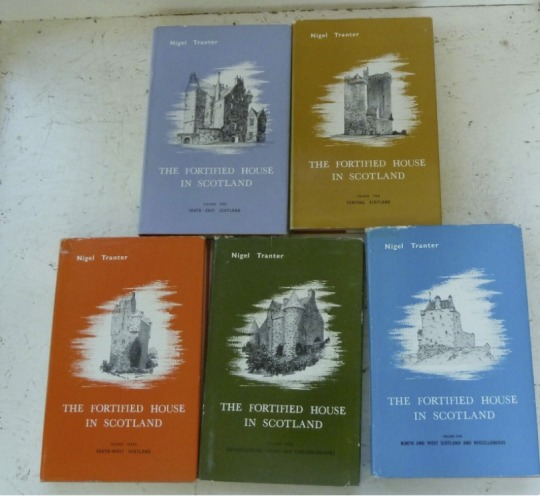


The prolific Scottish writer Nigel Tranter passed away om January 9th in the year 2000.
Nigel Tranter was probably the most prolific Scottish author after Sir Walter Scott. He published over 100 historical novels and many non-fiction books such as The Queen’s Scotland series. Born in Glasgow, he spent much of his life in Aberlady, which he loved.
His grandfathers were church ministers, but a great-grandfather invented the Tranter pistol. He was descended also from James Watt, inventor of the steam engine. He himself wanted to become a restoring architect, but the early death of his father forced him to stop studying. Instead he trained as an accountant and worked in the Scottish National Insurance Company. He served in the Royal Artillery during World War II.
Tranter went to George Heriot’s School in Edinburgh, which may have inspired his love of castles. His earliest writing on these was at the age of 13. As a boy he spent hours cycling to castles and mansions, and drawing them in meticulous detail, before going on to write about them in his first published book, The Fortalices and Early Mansions of Southern Scotland, 1400-1650, at the age of 22. This was followed by the five volumes of The Fortified House in Scotland. In later life he loved to take visitors out to castles and assisted many castle restoration projects in Scotland such as Fa’side in East Lothian.
He married May Jean Campbell Grieve in Athelstaneford Church in July 1933 and they had two children. He and May worked together on The Queen’s Scotland series, giving a short history of parishes in four Scottish regions until her death in 1979, when the project stopped.
Their son Philip was a climber, who sadly died in a car crash in 1966 on his way home from an expedition in the Dolomites. Tranter wrote No Tigers in the Hindu Kush from Philip’s notes.
Tranter saw himself primarily as a storyteller rather than a historian, and his first novel, Trespass, was published in 1937. Although criticised by some academic historians for writing fiction, he developed a huge new audience, who loved his tales of Scottish historical events and people. He wrote his fiction with increasing knowledge of Scottish history, introducing the subject to millions of people worldwide. From 1947 he decided he could earn a living by writing, and produced several novels for children, as well as adults. The Bruce Trilogy sold over 1 million copies and he had fan clubs in many countries. He also wrote Westerns, using the pen name Nye Tredgold.
Nigel Tranter received many honours and awards during his life, and was also actively involved in several organisations, including the St Andrews Society of East Lothian, Scottish PEN, Athelstaneford’s Flag Fund and the Saltire Society. He believed Scots should ‘be responsible for our own decisions’, and as chairman of the East Lothian Liberal Association for 15 years, he was part of the Scottish Convention, a cross-party pressure group set up to push for devolution. ‘We Scots are different, not better, but long live the difference’.
He continued to write into his 90s, starting each day with a walk across the wooden bridge at Aberlady Bay which he called ‘The Footbridge to Enchantment’. He was a familiar sight walking on the coast, stopping to jot down neat notes for his books on cards or even shells picked up from the beach. Some of these can be seen in the TranterMuseum, which is currently in Athelstaneford Parish Church. His last novel was Envoy Extraordinary. On his death thousands mourned and many friends and residents in the county remember him with great fondness.
Tranter and his family are buried in Aberlady Churchyard. There is a memorial cairn to him at the carpark near the footbridge which leads over to the nature reserve at Aberlady. The Scottish Castles Association have an annual Nigel Tranter Memorial Award in his memory.
39 notes
·
View notes
Text
Mutuals as places: part two
@petitecle - Neuschwanstein Castle, Germany
“Nestled among the breathtaking beauty of the Bavarian Alps, this fairy-tale castle served as the inspiration behind Walt Disney’s Sleeping Beauty Castle. Constructed in the late 1800s, Neuschwanstein was created as a fanciful retreat for Ludwig II of Bavaria. Dazzling chandeliers and beautiful paintings adorn every room in the castle while the third floor is devoted to Ludwig’s fascination of swan scenes from operas by the famous composer Richard Wagner, whom Ludwig deeply admired”.

@saccarinee - Palace of Versailles, France
“Notable especially for the ceremonial Hall of Mirrors, the jewel-like Royal Opera, and the royal apartments; for the more intimate royal residences, the Grand Trianon and Petit Trianon located within the park; the small rustic Hameau (Hamlet) created for Marie Antoinette; and the vast Gardens of Versailles with fountains, canals, and geometric flower beds and groves, laid out by André le Nôtre”.

@seaymphea - The Marble Caves in Patagonia, Chile
“Over more than 6,000 years, lake currents lapped at the marble, slowing carving out the smooth formations you see today. Though the marble itself isn't a brilliant blue, it dances with cerulean displays of color when the water reflects its light. As a result, it changes color throughout the year, depending on water levels and season”.

@senvive - Mafra Palace Library, Portugal
“The Palace itself is a monumental Baroque and Italianized Neoclassical palace-monastery located in Mafra, Portugal, 28 kilometres from Lisbon. Construction began in 1717 and ended in 1755. The wooden Rococo style library bookshelves hold some 36,000 leather-bound volumes dating from the 14th to the 19th centuries”.

@silk-fleur - Chateau de Chantilly, France
“One of the finest jewels in the crown of France's cultural heritage. It is the work of a man with an extraordinary destiny: Henri d’Orléans, Duke of Aumale, son of the last King of France, Louis-Philippe. This prince, who is considered to be the greatest collector of his time, made Chantilly the showcase for his countless masterpieces and precious manuscripts”.
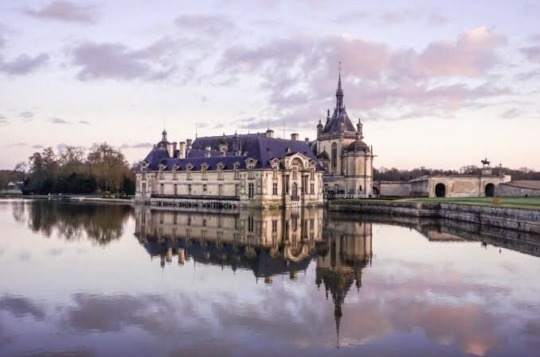
@sirenoirs - Melissani Cave, Greece
“In the 1962 excavations, quite a few oil lamps, plates and figures were discovered depicturing the god Pan and several nymphs. Legend has it that the Cave of Melissani was the very spot where one of those Nymphs, Melissanthi (or Melissani), drowned after being rejected by the god Pan”.

@sweet-voiced - Chateau de Gudanes, France
“The enchanting chateau, which overlooks the Midi-Pyrénées, was built in the 18th century on behalf of Louis Gaspard de Sales, the Marquis de Gudanes who was also known as the “King of the Pyrenees”. In 2013, The Waters family began the mission of restoring the Chateau, uncovering mysterious tunnels, ancient artefacts, and even a fresco painting after peeling away some old wallpaper”.

@tulletruffle - Angel Oak, South Carolina
“The fairytale-esque Angel Oak tree in Charleston, SC, is thought to be one of the oldest living organisms east of the Mississippi River (Estimated to be 400-500 years old). It stands 65 feet tall, with an area of 17,000 square feet shaded by its tentacular crown”.
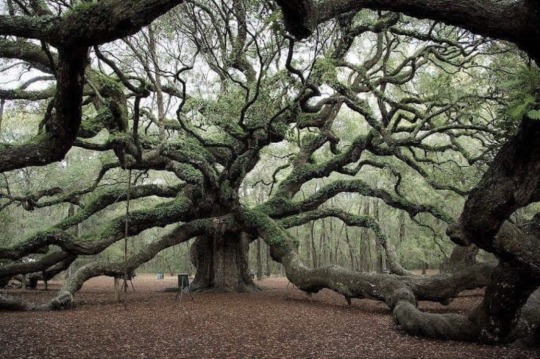
207 notes
·
View notes
Text
Frozen II spoilers below. . .sort of. Forest of Shadows sets up the plot for Frozen II. There are things in it that will be relevant later so if you want no spoilers at all, scroll away.
As she raised the candle higher, the sphere of light widened to reveal the rest of what they had found: a windowless room filled from flagstone floor to vaulted ceiling with sparkling shelves.
The shelves had been carved into the stone walls, and unlike the rest of the castle, these walls hadn’t been papered or painted over or decorated with rosemaling. They were left bare, and the tiny crystals embedded in the rock seemed to wink a friendly greeting as the candle’s light passed over them. It wasn’t just the rock that glittered underneath a layer of dust, but also the many strange and wondrous objects that sat on the shelves: a gleaming pair of silver scales, schematics of what looked like a dam, glass beakers and bottles filled with fascinating specimens of flora and fauna suspended in brackish water.
And there were books. They spiraled upward into the rafters of the ceiling, the only surface that had been painted and resembled a sky alive with the northern lights along with familiar constellations: Ulf the Wolf, Frigg the Fisherman, and many others. There were wide books with thick leather spines, tall books with thin spines, books with yellow pages, books with ragged pages, squat books, medium-sized books, and tiny books no bigger than a thumb. Anna’s mouth dropped open. No matter how different they looked, each book had the possibility of containing the answers that she so desperately needed.
Olaf teetered forward into the room. “Oooh, more books! Secret books!” “Secret books…” Anna mused, and her initial excitement dimmed. She knew she should have been more excited at the discovery of the secret room, but something about the secretness of it all pinched, leaving her feeling slightly bruised. She slowly made her way to the shelves. She wondered who had used this room. Arendelle’s royal family had lived in the castle for decades—ever since her grandfather King Runeard had overseen its construction when her father was just a boy. Perhaps this room had been a place of solace for a long-ago aunt or uncle.
Anna skimmed the titles. Some were written in languages that she didn’t know but recognized from her research for the grand tour. Others were in indecipherable symbols. But the ones that she could read made her heart backflip: Hulda’s Hideout; Scrolls of Trolls; Of Nightmares and Nixies; Quests of Yore; Sorcerer’s Craft and Games; Legends of Magic; Deciphering Magic…
Magic. Anna’s thoughts pulsed with the thump of her heart. Magic. Magic. Magic!
Magic was not unknown in Arendelle. After all, Elsa had magical abilities that no one in the kingdom had ever seen before. Or at least, no one alive had ever seen. In some of the old stories that were favorites of Queen Iduna’s, magic abounded. She’d told tales about tablecloths that could produce banquet-sized feasts in the blink of an eye, and boots that could travel seven leagues in a single step—of shape-shifters who lived in an enchanted forest, and stones that could turn lead into gold…but those were made up. Make believe. Pretend.
However, in the last three years, Anna had seen incredible things, impossible things, come to be. A sister who could be one with the earth and sky and build ice palaces with a few breaths and some nimble flicks of her wrist. A queen who could harness the cold. If Elsa could exist, as Anna very much knew she did, then why couldn’t other impossibilities exist as well?
Why couldn’t there be a spell of sorts, or an enchantment, that could fix whatever was happening with the Blight? Sure, Anna was hoping to find something in this room to help with the problem at hand, but after that, who knew? Maybe there was knowledge somewhere in there that could stop horseshoes from ever rusting, bread from ever going stale, or candles from ever melting down to stubs and going out. She’d be a hero.
“Aha.” Anna pulled a thick volume from a shelf and plopped it down onto a bare worktable in the center of the room alongside the candle. “This one might have something helpful.” She tapped at the title and read it out loud to Olaf. “The Alchemist’s Almanac: A Guide to the Care and Keeping of Fields, Accurate Accounting of the Weather, and Wheat.”
Olaf looked down his pair of ice spectacles at Anna. “Not exactly my genre.”
Anna smiled.
“Ooh, this one seems cryptic and dense!” Olaf said, tugging out another thick book. “Here! You might like it, too!” He held it up for Anna to see. Its cover was a beautiful brown with black lettering. The title wasn’t written in an alphabet Anna recognized, but as she squinted at the book, a forgotten memory—more of an impression of sound and color, really—coalesced: The soft fabric of her mother’s dress beneath her cheek as Anna snuggled into her lap. A warm pressure at her side—Elsa, who’d climbed up to join. Words, low and gentle and hazy as her mother read out loud from a book, its cover the color of Anna’s new riding boots. Lullabies about secret white rivers and Earth Giants and lost legends of yore…Could it be?
Setting the almanac back on the shelf, Anna cracked open the new book and saw the title again written in runes. Someone had written next to them, in pencil, the words Secrets of the Magic Makers.
Anna’s breath caught.
It was her mother’s handwriting.
Anna would know it anywhere.
This book. This room: her mother had known about it; she had been here. These books and objects about magic were hers.
---Forest of Shadows: Chapter 3
[ In this secret room Anna and Olaf discover (accessible via a horse statue in the library) Anna finds many books on magic and lore but one draws her attention the most. It had belonged to her mother. Her parents had used this room as a private place to research and plan. Within this book, Anna finds not only the existence of a secret tunnel that leads beneath Arenfjord to somewhere unnamed but she finds notes her mother made regarding the Dark Sea, which we now know is where they were going when they were lost at sea. ]
#finding arendelle (canon)#the next right thing (anna)#all is found (queen iduna)#do not reblog#comments are welcome
11 notes
·
View notes
Text
1824 Feb., Sat. 28
6 50/60
11 1/4
No kiss either last night or the night before – At 12 1/4 got up, went down stairs in consequence of the dog’s barking – Somebody certainly about the house but could see no one, and after staying down about 1/4 hour got into bed again and slept soundly till just before getting up –
Gave Hotspur oatmeal and water. From 8 to 8 3/4 wrote out from page 106 to 111 volume 2 Anacharsis – Wrote the last 3 1/2 lines – Translated chapters 29, 30 libro ii Thucydides.
10 minutes calling I[sabella] N[orcliffe] at 9 – Went out to the workmen at 9 1/2 – Staid with them 1/2 hour – Cold and snowing a little all the while – Came in at – Wrote out the 1st 8 lines of chapter 29 libro 2 Thucydides till I[sabella] N[orcliffe] was ready, and sat down with her to breakfast at 10 20/60 –
Came upstairs at 11 1/4 – From 11 20/60 to 12 20/60 wrote out chapters 29 (all but the 8 lines) 30 libro 2 Thucydides (and which took me 1/4 hour). Translated with great care chapters 31, 32, 33 – looked a little forward into Thucydides –
Letter this morning from M– [Mariana] (Lawton) 3 pages the ends and 1 1/2 pages of crossing – She had had a bad a bilious attack but seems now pretty well – Catalani did not go – She was prevented leaving Liverpool on Friday (last Friday week) and then obliged to make the best of her way to town –
“Her singing is certainly enchanting and her manners most bewitching, but if I think if some of our enthusiasts had seen her the 1st morning I called, they would have been a little out of love – anything so dirty-looking I never before saw – I really think, even Catalani, Charlotte would not have coveted the kiss I got – She was not well, and looked altogether most forlorn – Don’t you tell this to Bell [Isabella]: for she would not believe it, if one did, and never forgive me into the bargain for believing my own eyes.”
Some likelihood of her friend Miss Pattison marrying Mr. Powys – Some likelihood perhaps of M– [Mariana]’s comin]g in July –
Had just written the last line at 12 50/60 – From 1 to 3 20/60 (cut my nails 10 minutes) making extracts from volume 2 Fleming’s today at 3 1/2 – Came in at 4 1/4 – Dressed etc. in a hurry and sat down to dinner at 4 1/2 –
I[sabella] N[orcliffe] walked to H–x [Halifax] (as usual). Came upstairs at 6 1/4 – From 6 1/2 to 8 making extracts from volume 2 Fleming – Went down to coffee at 8 5/60 – Did nothing afterwards –
Came up to bed at 9 ¾, at which hour Barometer 1/3 degree above changeable, Fahrenheit 37° – Perpetual snow-shower during the day but not enough to whiten the grounds below – the tops of the hills covered –
E [with three dots] O [with one dot, denoting discharge from venereal complaint] a little drop or two scarcely perceptible –
[More on Madame Catalani below]

Anne and Eliza Raine had seen Madame Catalani at a performance in York in 1809. Eliza wrote the following poem in her notebook (French translation to English as it appears in Patricia Hughe’s “The Early Life of Miss Anne Lister and the Curious Tale of Eliza Raine”):
A Madame Catalani
Quels accous! Quelle mélodie!
Sommes nouse aux concerts des dieux?
Aux transports dont l’ȃme est ravie
On se croit habitant des cruex.
Des arts n’est-ce pas le genie
Qui montre à son peuple chère
La déesse de l’harmonie
Sous les traits de Catalani?
To Madame Catalani!
What energy! What a melody!
Are we at the concert of the Gods?
When our spirits are transported
We think we are nowhere at all.
Aren’t the arts brilliant
At showing its dear friends
The goddess of harmony
In the guise of Catalani?
#anne lister#anne lister code breaker#isabella norcliffe#mariana lawton#hotspur#madame catalani#eliza raine#Shibden Hall#Tib at Shibden Hall
3 notes
·
View notes
Photo
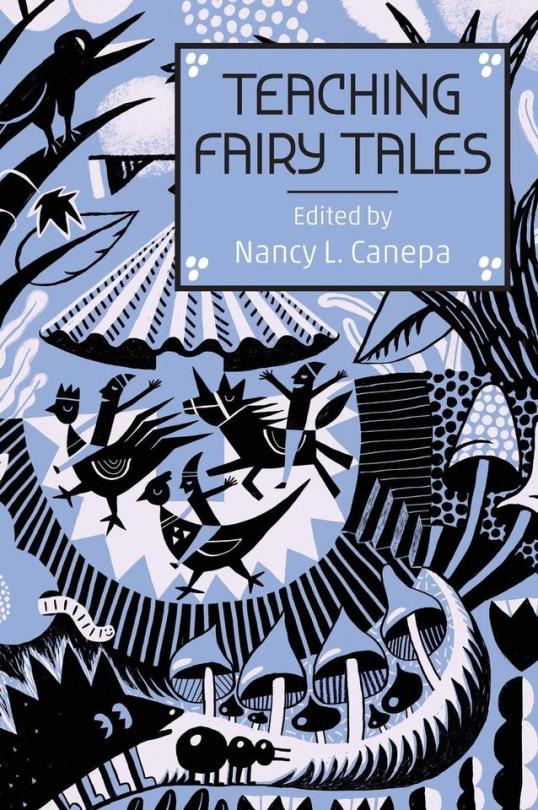
Teaching Fairy Tales (Series in Fairy-Tale Studies), edited by Nancy L. Canepa, Wayne State University Press, 2019. Cover art by Iveta Vaicule/iStock. Info: wsupress.wayne.edu.
Teaching Fairy Tales edited by Nancy L. Canepa brings together scholars who have contributed to the field of fairy-tale studies since its origins. This collection offers information on materials, critical approaches and ideas, and pedagogical resources for the teaching of fairy tales in one comprehensive source that will further help bring fairy-tale studies into the academic mainstream. The volume begins by posing some of the big questions that stand at the forefront of fairy-tale studies: How should we define the fairy tale? What is the "classic" fairy tale? Does it make sense to talk about a fairy-tale canon? The first chapter includes close readings of tales and their variants, in order to show how fairy tales aren’t simple, moralizing, and/or static narratives. The second chapter focuses on essential moments and documents in fairy-tale history, investigating how we gain unique perspectives on cultural history through reading fairy tales. Contributors to chapter 3 argue that encouraging students to approach fairy tales critically, either through well-established lenses or newer ways of thinking, enables them to engage actively with material that can otherwise seem over-familiar. Chapter 4 makes a case for using fairy tales to help students learn a foreign language. Teaching Fairy Tales also includes authors’ experiences of successful hands-on classroom activities with fairy tales, syllabi samples from a range of courses, and testimonies from storytellers that inspire students to reflect on the construction and transmission of narrative by becoming tale-tellers themselves. Teaching Fairy Tales crosses disciplinary, historical, and national boundaries to consider the fairy-tale corpus integrally and from a variety of perspectives. Scholars from many different academic areas will use this volume to explore and implement new aspects of the field of fairy-tale studies in their teaching and research.
Contents:
Teachings Fairy Tales: An Introduction – Nancy L. Canepa
I. Foundations of Faity-Tale Studies
What Is a Fairy Tale? – Maria Tatar
The Prehistory of Fairy Tales – Graham Anderson
The Evolution of Folk- and Fairy Tales in Europe and North America – Jack Zipes
The Faity-Tale Canon – Donald Haase
II. Theaching and Learning with Fairy Tales
Fairy Tales in the Classroom – Lewis C. Seifert
Chapter 1. Fairy Tales and Tale Types
Marriage, Female Agency, and Sexuality in Monster Bridegroom Tales: Teaching "Beauty and the Beast" – Anne E. Duggan
Morals and Miracles: The Cause of ATU 555, "The Fisherman and His Wife" – Victoria Somoff
Italo Calvino's "The Parrot": Teaching Frame and Embedded Narratives – Gina M. Miele
Chapter 2. Fairy Tales in Context
Fairy Tales in European Context: Reading Through Multiple Lenses – Linda Kraus Worley
Perspectives on the Civilizing Process: Using Fairy Tale to Teach French and Italian Cultural History – Allison Stedman
"The Enchantments of Eloquence": Salon Culture and the French Fairy-Tale Tradition – Faith E. Beasley
Long Ago and far Away: Histicizing Fairy-Tale Discurse – Jennifer Schacker
Chapter 3. Teaching New Scholarly Approaches to Fairy Tale
Theaching Western Fairy-Tale Traditions in Women's Studies – Charlotte Trinquet du Lys
Cognitive-Affective Approaches to Fairy Tale – Maria Kaliambou
Teaching Fairy Tales from a Disability Studies Perspective – Ann Schmiesing
Teaching Fairy-Tale Versions, Adaptations, and Translations – Cristina Bacchilega
Spinning Fairy-Tale Webs in the Undergraduate Classroom – Suzanne Magnanini
Chapter 4. Fairy Tales in the Foreign-Language Classroom
"I Cannot Understand You": Folktales and Foreign-Language Pedagogy – Maria Kaliambou
Louisiana Fairy Tales: Lessons in nation Buiding and the Politics of Language – Christine A. Jones
Repetition in the Teaching of Italian Fairy Tales: Considerations from the Classroom – Cristina Mazzoni
Chapter 5. Fairy-Tale Activities and Projects
"Once Upon a Canvas": Organizing an Exhibit on Fairy-Tales Illustrations – Elio Brancaforte
The SWtory of "Myth, Folktale, and the Children's Literature" – William Moebius
From Mercantilism to Laissez-Faire: Theaching Economic Though with French Fairy Tales – Benjamin Balak and Charlotte Trinquet du Lys
Following the Path of Cookies and Bread Crumbs: Taking the Fairy-Tale Course Online – Julie L. J. Koehler
And They All Learned Happily Even After: Activities for Teaching Language and Culture Through Fairy Tales – Nancy L. Canepa
Chapter 6. Fairy-Tale Courses: Sample Syllabi
The Fairy Tale – Graham Anderson
The Origins of the European Fairy Tale – Jack Zipes
Fairy Tales in European Context – Linda Kraus Worley
The Literary Fairy Tale – Suzanne Magnanini
Cultural Intersection of france and Italy – Allison Stedman
Conversations Classiques – Faith E. Beasley
Fairy Tales of Germany – Ann Schmiesing
Popular Genres: The Fairy Tale – Jennifer Schacker
Folklore and Literature: Questions of Translation and Adaptation – Cristina Bacchilega
Understanding the Fairy Tale – Julie L.J. Koehler
Chapter 7. From Teaching Fairy Tales to Creative Tale-Telling
Nine Weeks of Adventures in Storytelling – Kay Stone
A Week of Notes from a Storyteller: From Folktale to Fiction – Gioia Timpanelli
Contributors
Index
15 notes
·
View notes